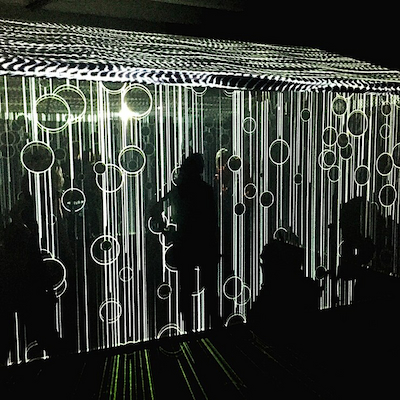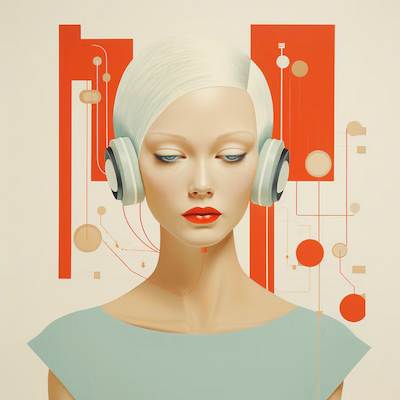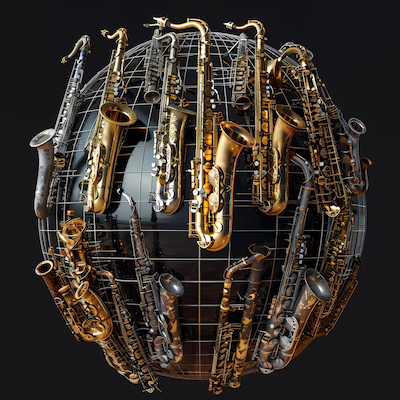
Contemporary music is a vast and dynamic field that reflects the complexities and innovations of today’s society. Contemporary composition techniques and sound experimentations emerge as essential tools for composers seeking to explore new forms of musical expression. With the evolution of technologies and the growing interaction between various artistic disciplines, composers have a range of resources that challenge traditional musical conventions. This creative freedom allows new sounds, structures, and styles to develop, expanding the horizons of music.
In this context, sound experimentations play a fundamental role. They not only challenge established norms but also encourage critical reflection on what is considered music. Through combining elements from different genres, incorporating technology, and exploring new performance techniques, contemporary composers are creating works that resonate with human experiences in unique and impactful ways. This article will explore how these techniques work, their advantages, and how you can begin exploring them in your own musical practice.
How Contemporary Composition Techniques and Sound Experimentations Work
Contemporary composition techniques are characterized by an innovative and often unconventional approach to music creation. One of the main features of these techniques is the freedom to choose the structure and form of the music. Unlike traditional forms that follow rigid rules, contemporary composers have the freedom to experiment with different structures, rhythms, and harmonies. This means they can create works that do not fit specific categories, allowing for greater sonic and expressive diversity.
Another important feature is the use of new technologies and digital tools. Contemporary composers often use composition software, synthesizers, and electronic instruments to create and manipulate sounds. These tools offer an almost infinite range of sonic possibilities, allowing composers to experiment with textures, timbres, and effects that would be impossible to achieve with traditional acoustic instruments. The combination of recording and digital editing techniques also allows a new way of composing, where sounds can be captured, manipulated, and recontextualized in innovative ways.
Additionally, sound improvisation has become an integral part of the contemporary composition process. Many composers incorporate elements of improvisation into their works, allowing the music to evolve organically during the performance. This not only creates a unique experience for the listener but also challenges the composer to adapt and respond to the present moment. This interaction between composition and improvisation results in dynamic and ever-changing works, reflecting the ephemeral nature of music.
Finally, interdisciplinarity is a crucial aspect of contemporary composition techniques. Composers are increasingly engaging with other art forms such as dance, theater, and visual arts, creating works that cross boundaries and challenge traditional definitions of music. This collaborative approach enriches the musical experience and broadens the scope of composition, allowing composers to explore new narratives and meanings.

Advantages of Using Contemporary Composition Techniques and Sound Experimentations
One of the main advantages of contemporary composition techniques is the creative freedom they provide. With the possibility to explore new forms, structures, and sounds, composers can express their ideas more authentically and personally. This freedom allows artists to move away from traditional expectations and create works that truly reflect their unique visions and experiences.
Another significant advantage is the ability to innovate and surprise the audience. By using experimental techniques, composers have the opportunity to create sound experiences that challenge listeners’ expectations. This not only maintains the audience’s interest but also offers a new perspective on what music can be. The constant innovation in composition techniques also contributes to the evolution of music as a whole, encouraging other artists to explore new directions in their work.
Moreover, the integration of technology in contemporary composition techniques allows for greater accessibility and democratization of music. With the advent of music production software and sharing platforms, composers of all levels can create and distribute their works more easily and quickly. This accessibility promotes a diversity of voices and styles in contemporary music, enriching the global musical landscape.
Lastly, contemporary composition techniques and sound experimentations encourage collaboration between artists from different disciplines. By working together with other creators, composers can expand their horizons and incorporate new ideas and influences into their work. This collaboration enriches the creative process and results in works that are richer in meaning and impact, creating a deeper experience for the audience.
How to Explore Contemporary Composition Techniques and Sound Experimentations
Exploring contemporary composition techniques and sound experimentations can be an exciting and enriching journey. Here are some approaches you might consider:
Discovering new innovative sounds: Start experimenting with different sound sources. This may include recording environmental sounds, using unconventional objects as instruments, or manipulating digital sounds. The key is to be open to new possibilities and let your curiosity guide your explorations.
Experimenting with electronic composition: Use music production software to create your own compositions. Learn to use synthesizers, samplers, and effects to expand your sonic palette. Electronic composition offers a vast range of possibilities and can be an excellent way to explore new ideas.
Incorporating sound improvisation into works: Try integrating improvisation elements into your compositions. This can be done through improvisation sessions with other musicians or even in your solo performances. Improvisation can bring a new dimension to your music and allow you to connect more deeply with the present moment.
Using modern arrangement techniques: Learn about modern arrangements and how they can be applied to your compositions. This may include the use of complex harmonies, tempo changes, and rich textures. Understanding arrangement techniques can help bring your ideas to life and create more cohesive works.
Creating avant-garde music with sound synthesis: Explore sound synthesis as a way to create avant-garde music. This may involve manipulating sound waves, creating new timbres, and experimenting with different synthesis techniques. Sound synthesis allows you to create unique and innovative soundscapes.
Integrating sound art into performances: Consider how sound art can be incorporated into your performances. This might include the use of visual elements, audience interaction, or creating immersive experiences. Integrating different art forms can enrich your performance and create a deeper connection with the audience.
While exploring these techniques, remember that experimentation is fundamental. Don’t be afraid to fail or create something imperfect. Every attempt is an opportunity for learning and growth as a composer.

Did You Enjoy Learning About Contemporary Composition Techniques and Sound Experimentations?
Contemporary composition techniques and sound experimentations unlock a vast, dynamic landscape for composers and musicians to explore. These modern approaches break free from the traditional boundaries of melody, harmony, and rhythm, offering new avenues for sonic discovery. The shift toward embracing the unconventional—whether through the manipulation of timbre, the use of non-traditional instruments, or the integration of technology—has allowed contemporary music to thrive in exciting, unprecedented ways.
By delving into these innovative methods, musicians are not just expanding their creative vocabulary; they are pushing the very limits of what music can be. Techniques like aleatoric music, microtonality, and extended instrumental techniques open up spaces for greater individual expression and more nuanced storytelling. Meanwhile, electronic manipulation of sound, the incorporation of field recordings, and the use of generative algorithms blur the line between composition and sound design, adding new layers to the listening experience.
The beauty of contemporary composition lies in its freedom—its invitation to experiment, deconstruct, and reconstruct musical ideas. Unlike traditional classical forms that follow established patterns, today’s composers can bend and reshape structures to evoke raw emotion, provoke thought, and create immersive experiences for their audiences. Whether you’re using silence as a tool, layering non-musical sounds to create rhythm, or exploring unique tonal spaces, contemporary composition allows you to transcend conventional expectations and forge your own musical language.
As technology evolves and influences become more interconnected, the boundaries between genres and styles continue to dissolve, leading to even richer fusions and cross-pollinations of sound. Whether you’re creating music for concert halls, film, or virtual environments, the possibilities for expressing your unique voice are more limitless than ever before. So, don’t hesitate to dive deeper into this fascinating sonic universe. Keep exploring, questioning, and reimagining—because, in the world of contemporary composition, the adventure has no end.
Frequently Asked Questions
What are contemporary composition techniques and sound experimentations?
They are new ways to create and explore music. They mix styles and use modern tools.
How can I learn about these techniques?
You can learn through online courses, workshops, and tutorials. Also, listening to experimental music helps a lot!
What are some examples of sound experimentations?
Examples include using everyday objects to make sounds, manipulating digital recordings, or mixing different genres. Creativity is the limit!
Can these techniques be used in all music styles?
Yes! Contemporary composition techniques and sound experimentations can be applied to any style. They bring innovation to your sound.
Do I need expensive equipment to experiment?
No, you don’t! Many experiments can be done with simple things like your phone or basic instruments. Just be creative!

